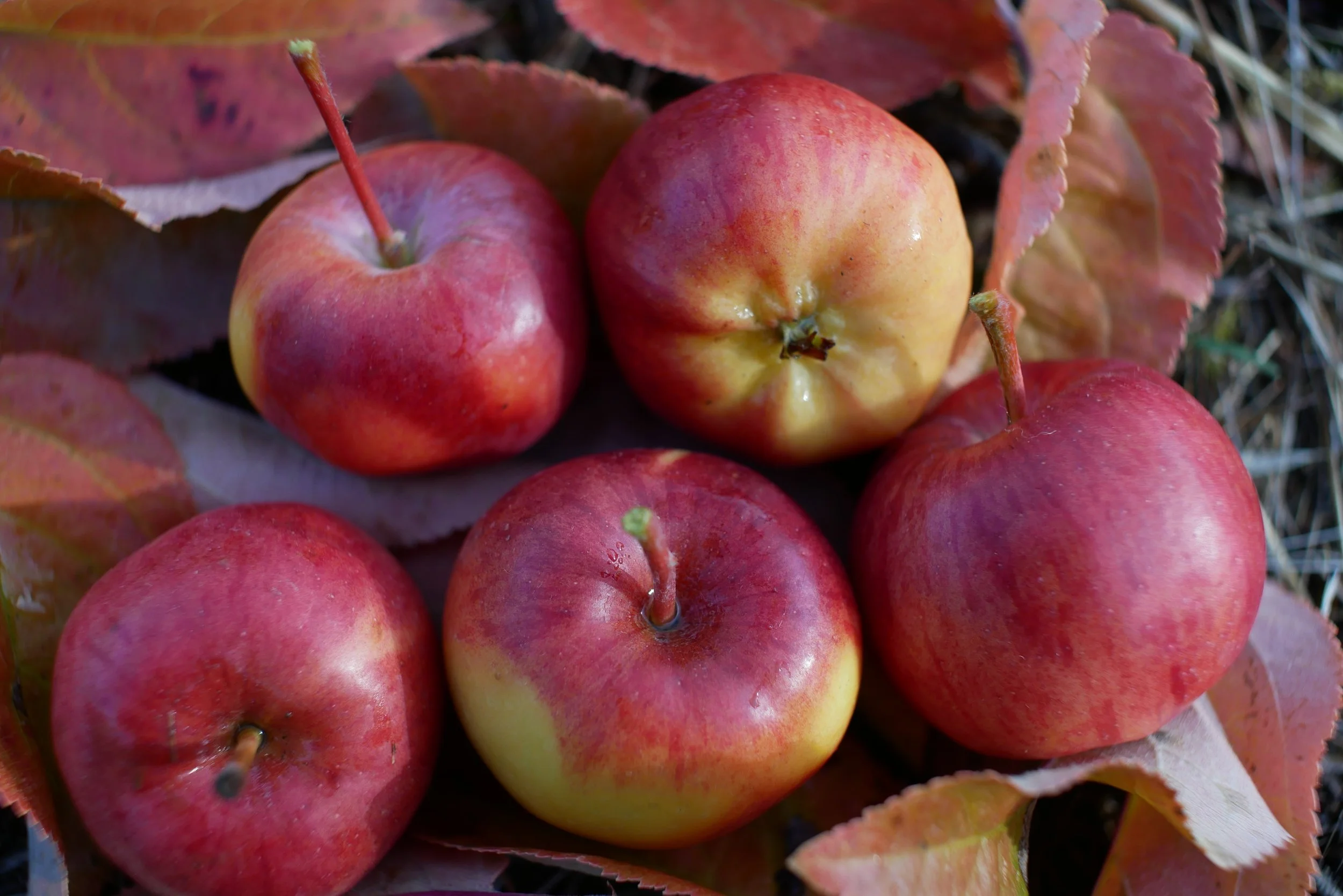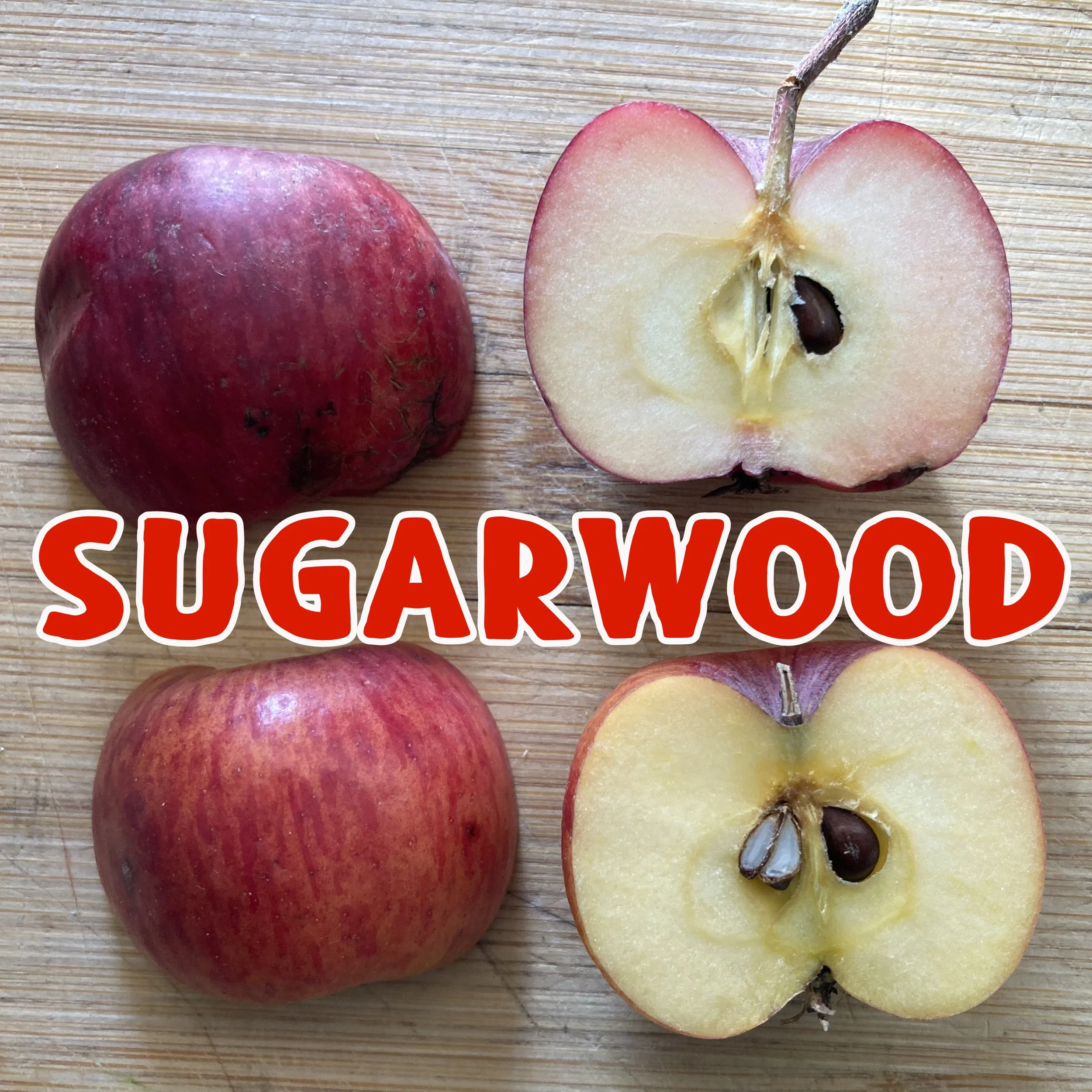SUGARWOOD
SKILLCULT APPLE BREEDING PROJECT
This page is for sharing information on my seedling apple variety Sugarwood.
Sugarwood is a cross between Grenadine and Wickson. It is a small sweet crab type apple that produces abundantly and hangs on the tree well. This is really a cider variety. The flesh is quite hard and woody until it is super ripe, and then it’s still usually pretty solid. While the flesh is woody, it seems to release it’s juice easily and the juice flows out very clear. If I had to design a perfect pressing apple flesh, it would likely be close to this one. As it has fruited more, it seems to tenderize pretty well very late in the season, into December. The flavor is quite good, so some may enjoy eating it.
The sugar levels are very high as the name suggests. I think it may be the sweetest apple I’ve measured here at 28%. Few can hope for the very high sugar levels I get here with little to no irrigation in the bright California sun and long cloudless summers, but it should still produce very high sugar levels elsewhere relative to most apples. I heard from someone in the coastal Pacific North West and they got 27% sugar out of it, so maybe I’m wrong! I have a friend who makes wine and he prefers grapes much less sweet than this apple. 27% sugar could potentially produce 17.5% alcohol!
Sugarwood has some tannin and acidity, but it is probably more of a blending apple for it’s sugar content than it is a single varietal cider apple. The juice could of course be used for drinking and processing as well. Flavor wise, it has more fruit flavor than Wickson and only a hint of that apples savory flavor, if any. When well ripened, the flavor can be quite rich. It hangs on the tree very well and seems to keep well off the tree too. I think it will be possible to ripen this apple then put off harvesting until it’s convenient, or harvest and let it sit a month or two before pressing. It is a very late apple, late november on I would guess. I have them on the tree still here two days til the end of the year.
These specimens of Sugarwood were picked up off the ground in Late February, still edible. Note the red staining in the flesh, courtesy of it’s parent Grenadine. While it never seems to produce very high flesh color, it can be significant, so it might be useful in breeding more red fleshed cider apples.
One trait Sugarwood did not inheret from Wickson is the tendency to crack in the fall rains. Wickson is very prone to cracking and the whole crop can be lost most years if it is not picked right before the first signficant rain. In 2021 we had what might be the worst drought year in living memory, in which I didn’t irrigate the trees. In the fall came extremely heavy early rains that saturated the ground. No cracking occured in Sugarwood, though many other varieties cracked and Wickson was a total loss as usual.
Scions of sugarwood have been circulated and I’m growing more. Someday I’ll hear back from the first cider maker to put this apple to the test. I hope it proves to be as useful as I think it will. Regarding further breeding, we have high sugar, durability, long hanging and rich flavor, with the added bonus of red fleshed genes in the mix. Sounds pretty promising for breeding new cider apples to me!
Sugarwood pulled down by heavy fruit load.


